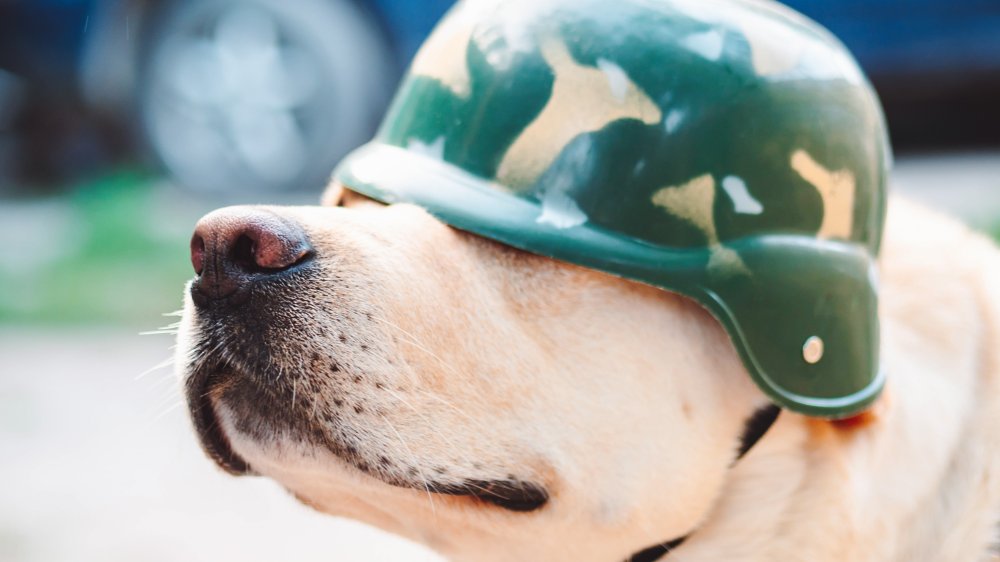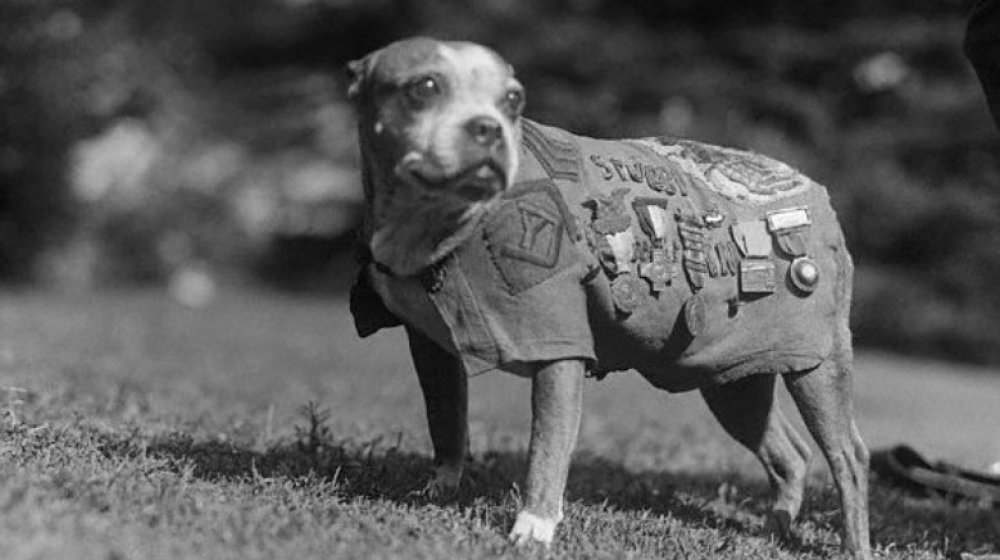The Truth About America's Most Decorated War Dog
William Tecumseh Sherman famously observed that "war is hell," and Don Bluth asserted on several occasions that "all dogs go to heaven." They can't both be right.
As far back as the 7th century BC, puppers have been used as instruments of destruction on the battlefield. Loyal, single-minded, and relatively easy to train, they've served many purposes, breaking Macedonian ranks as first-wave combatants in ancient Greece, conducting Soviet suicide bombings of German tanks in World War II, and even assisting in the killing of Osama bin Laden in 2011, according to the Seattle Times.
But for all of their wartime contributions, what can our four-legged besties expect in return? Milk Bones, one hopes, but we'll never know for sure. We do know that they've been awarded service medals over the years, though Medals of America reports that the practice stopped in the U.S. after a German Shepherd mix named Chips got a Purple Heart during the second World War and some folks got huffy about it. With that being the case, which pupper managed to scoop up the most medals before America pulled the plug?
The dogs of war
There are two strong contenders.
The first was the aforementioned Chips, who served as a sentry dog in World War II. Defense Media Network recounts his moment of glory: his handler's infantry division was pinned down by a surprise attack from a hidden machine gunner's nest in a hut they were passing. Chips, not having any of that, broke loose and jumped through the hut's window. A few minutes later, the gunner exited the building with Chips at his throat, and three more soldiers followed him out, promptly surrendering. For this act and others, the dog was awarded a Silver Star, a Purple Heart, the Distinguished Service Cross, eight battle stars, and a theater ribbon. While the medals were later taken back, he at least received an honorable discharge, which looks better on a resume.
Then there was Stubby, the "most decorated dog of WWI." A Boston Terrier mutt, his accomplishments were varied and remarkable, running the gamut from warning his fellow soldiers of incoming mustard gas to learning how to do a little puppy salute. They promoted him to sergeant, and while his many commendations would be difficult to quantify, you can see most of them hanging from his taxidermied corpse at the Smithsonian.

